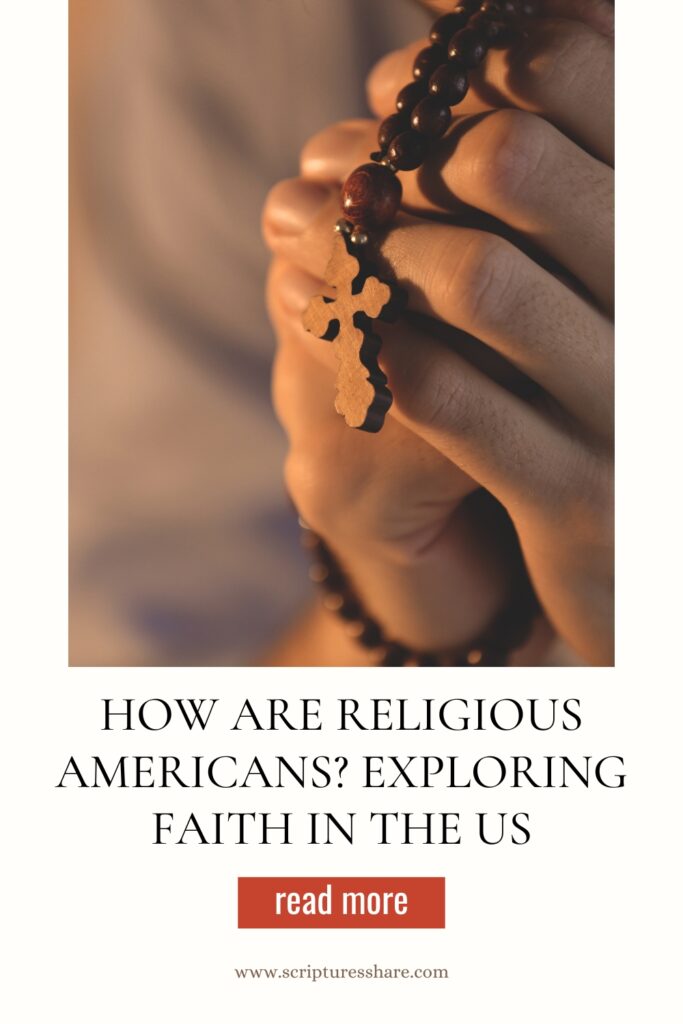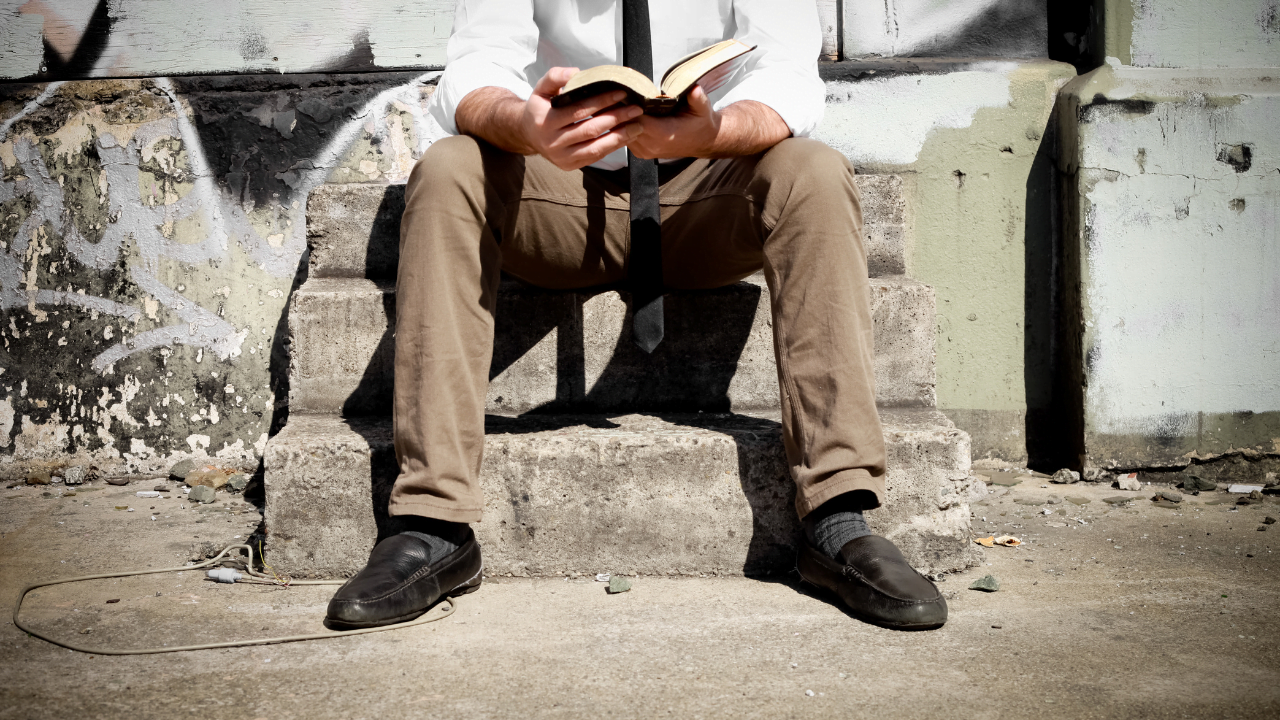No products in the cart.
How Are Religious Americans? Exploring Faith in the US
This post contains paid and/or affiliate links. I make a small commission at no extra cost to you. Please see our Privacy Policy.
Religion has always been a big part of American life, affecting the beliefs and lives of millions. In recent decades, the way Americans see faith has changed a lot. About three in four Americans still claim a religious faith, with most (68%) saying they’re Christian.
However, the number of Christians decreased from 87% in 1973 to 68%. At the same time, more people say they don’t have a religious preference, going from 5% to 22%.
Even though most Americans say they’re religious, the amount of faith they have in their daily lives varies greatly. Only 45% say religion is “very important” to them. Another 26% think it’s “fairly important,” and 28% don’t see it as very important.
Also, fewer people are going to religious services. Only 32% of Americans went to services in the last week, down from 44% in 2000 and 49% in 1958.
The changing views on religion show how spirituality is evolving today. We’ll look into how religion in America is changing, its role in daily life, and what’s new in religious trends in the U.S.

The Shifting Landscape of Religion in America
In the United States, how people see religion has dramatically changed in recent years. Fewer Americans now call themselves Christian, and more say they don’t belong to any religion.
The Pew Research Center found that from 2007 to 2014, the Christian share of the U.S. population decreased from 78.4% to 70.6%. At the same time, more people said they didn’t have a religion, going from 16.1% to 22.8%.
Declining Christianity and Rising “Nones”
Many young adults are leaving Christianity and becoming unaffiliated with any religion. Changes in who moves to the U.S. and how many children people have also contributed to this shift.
Not all Christian groups are losing followers at the same rate. Mainline Protestants and Catholics have lost about three percentage points each since 2007. Evangelical Protestants have seen a smaller decline, losing about one percentage point.
Trends in Religious Switching and Demographic Changes
The U.S. is becoming more religiously diverse. Now, racial and ethnic minorities make up a more significant part of some religious groups. For example, 41% of Catholics, 24% of Evangelical Protestants, and 14% of mainline Protestants are from these groups.
Also, more Americans are marrying people of different religions. In 2010, 39% of marriages were between people of different faiths, compared to only 19% before 1960.
Experts think the U.S. will see even more changes in religion in the future. If current trends continue, Christians might not be the majority in a few decades. This could change how religion affects American society and politics.
How Religious Are Americans
Most Americans say they believe in faith but don’t see religion as crucial as before. Gallup polls show that from 1965 to now, fewer people say religion is “very important” in their lives. This drop is also seen in how often people go to church, with only 32% attending in the last week, down from 49% in 1958.
Also, fewer Americans are part of a church today than in 1937, when Gallup first asked about it. Now, less than 45% belong to a church. These numbers show that while many Americans still believe in religion, they used to be more active in their faith.
| Religious Affiliation | Percentage of Americans |
|---|---|
| Christian | 70.6% |
| Evangelical Protestant | 25.4% |
| Mainline Protestant | 14.7% |
| Historically Black Protestant | 6.5% |
| Catholic | 20.8% |
| Unaffiliated (religious “nones”) | 22.8% |
| Atheist | 3.1% |
| Agnostic | 4.0% |
| Nothing in particular – religion not important | 8.8% |
| Nothing in particular – religion important | 6.9% |
| Don’t know | 0.6% |
The data shows a significant change in religiosity in America. Fewer people are tied to traditional religions, and more are not affiliated. Even though most Americans call themselves Christian, they’re not as deeply involved in their faith as they once were.

The Importance of Religion in American Life
Many Americans see religion as a big part of their lives. It shapes their values, beliefs, and interactions with others. Over 50% of Americans think churches and religious groups do more good than harm. They believe these groups strengthen morality and bring people together.
However, opinions on religion’s role vary greatly based on political views. Republicans tend to see religious groups more positively than Democrats. Most Americans think religion is losing its place in public life. Yet, Republicans see this as a bad thing more often than Democrats.
Religion’s Influence on Society and Politics
There’s a lot of debate about religion’s role in American society and politics. Racial differences also come into play. Black Democrats tend to see religion’s role more positively than white Democrats.
As religious affiliations change, the role of religion in American society and its influence on politics are key topics. The perceptions of religion’s impact on public life are also important to discuss.
“The role of religion in American society and its influence on politics remain crucial topics of discussion and perceptions of religion’s impact on public life.”
Religious Affiliation and Identification
Recent surveys show the religious scene in the U.S. is changing. About three-quarters of Americans say they belong to a faith. But, the types of faiths people choose have changed a lot.
Most Americans, 68%, call themselves Christian. Within this group, 33% are Protestant, 22% are Catholic, and 13% are another type of Christian or just “Christian.” But, more people say they have no faith, going from 5% in 1973 to 22% today.
Percentage of Christians and Non-Christian Faiths
Even though most Americans are Christian, many follow other faiths too. The numbers show that 2% are Jewish, 1% are Muslim, and 1% are Buddhist. Another 7% follow other non-Christian beliefs or none at all.
| Religious Affiliation | Percentage of U.S. Population |
|---|---|
| Christian (Total) | 68% |
| Protestant | 33% |
| Catholic | 22% |
| Other Christian | 13% |
| Religiously Unaffiliated (“Nones”) | 22% |
| Jewish | 2% |
| Muslim | 1% |
| Buddhist | 1% |
| Other Non-Christian Faiths | 4% |
The data shows how religious beliefs in the U.S. are changing. More people are not tied to a faith or are choosing non-Christian beliefs.
Perceptions of Religion’s Role in Public Life
A 2019 Pew Research Center survey showed that most Americans think religious groups should not get involved in politics. About two-thirds believe churches should not back political candidates. This view is clear: keep religion and politics separate.
But, many Americans still see religion as a positive force. Over half think that churches and religious groups help more than they hurt. Yet, this view varies by party.
Republicans tend to see religion as a good thing for politics and society more than Democrats do.
| Perception of Religion’s Role | ||
|---|---|---|
| Believe religion has about the right amount of influence in politics | 44% | 26% |
| Believe religion should have more influence in politics | 38% | 13% |
| Believe churches and religious organizations do more good than harm | 70% | 41% |
But there’s a worrying trend. 37% of Americans think religious groups have too much power in politics. Only 28% think they have too little. This shows the ongoing debate about the separation of church and state and the role of religion in public life.
“Around 70% of attendees at religious services feel that there is an adequate amount of political discussion during sermons, with few stating there is either too much or too little political talk.”
The debate on religion’s influence on politics is ongoing. Americans are split on how much religious groups should be involved in public life.
Understanding these views on religion in public life is key to navigating the changing religious and political scene.

Religious Attendance and Participation
Many Americans say they belong to a religion, but fewer attend church or other religious places often. Only 32% of Americans attended a religious service last week, down from 49% in 1958. Now, less than half (45%) of people are part of a formal religious group, a big drop from 73% in 1937.
Church Attendance and Membership Trends
Younger people are leading the drop in church attendance and religious membership. Only 30% of Americans attend church weekly, but this falls to 22% for those aged 18-29.
Now, 9% of Americans don’t claim any religious affiliation, up from 21% in recent years. This shows how religion in the U.S. is changing.
| Religious Group | Regular Attendance Rate |
|---|---|
| Protestants | 44% |
| Catholics | 33% |
| Muslims | 38% |
| Mormons | 66% |
| Orthodox Christians | 26% |
| Jews | 22% |
| Buddhists | 14% |
| Hindus | 13% |
There’s a big difference in how often people from different religions attend services. Mormons and Protestants are more likely to attend, but Buddhists and Hindus are less likely.
Political Views and Religious Leanings
America’s political scene is closely linked with religious beliefs and groups. The Pew Research Center’s latest data reveals how clergy see political parties and the tie between religion and politics.
Perceptions of Party Affiliations Among Clergy
Americans have different views on the political sides of religious leaders. Most people who often go to religious services need to learn their leaders’ political leanings. They see a mix of Republicans and Democrats among them. Yet, more people think their leaders lean towards the Republicans.
This divide is clear among Republicans and Democrats. Each group tends to believe their religious leaders share their political views.
Despite these views, most people attending religious services are happy with how much politics is discussed in their sermons. They also agree with their leaders on political matters.
This shows a complex relationship between religion, politics, and religious leaders’ roles in public debate.
| Political Affiliation | Percentage Who Perceive Clergy as Mostly Republican | Percentage Who Perceive Clergy as Mostly Democrat |
|---|---|---|
| Republican | 37% | 13% |
| Democrat | 18% | 28% |
| Independent | 24% | 22% |
These results show the complex relationship between religion and politics and highlight the partisan divides in religion. These factors influence the political views of religious leaders in the U.S.
Diversity in Religious Beliefs and Practices
The United States is known for its rich mix of religious beliefs and practices. Most Americans call themselves Christians, but the country also has a wide variety of non-Christian faiths. These add to our colorful religious diversity.
About 7% of Americans follow non-Christian faiths, including 2% Jewish, 1% Muslim, and 1% Buddhist. This shows how accepting and open American society is to different beliefs.
| Religious Affiliation | Percentage of U.S. Population |
|---|---|
| Christian | 68% |
| Non-Christian Faiths (Jewish, Muslim, Buddhist, etc.) | 7% |
| Unaffiliated (Atheist, Agnostic, “Nothing in Particular”) | 26% |
The number of people with no religious affiliation, or “nones,” is growing. This group includes atheists, agnostics, and those who don’t see themselves as part of any religion. Over one-quarter (26%) of American adults are in this group.
Even with these changes, non-Christian faiths are still a big part of American life. They add to the country’s cultural and spiritual richness.
The Rise of Secularism and Unaffiliated
American religion has seen a big change, with more people saying they are atheists, agnostics, or “nothing in particular.” Pew Research shows that these “nones” grew from 5% in the 1970s to 22% today.
This change is due to many reasons, like new generations losing faith ins religious group and changing views on religion in public life.
Factors Contributing to Religious Disaffiliation
Many “nones” say they slowly stopped believing, not all at once. Some main reasons for this trend are:
- Generational shifts: Young people are more likely to be “nones” than older folks, showing a move away from traditional faith.
- Disillusionment with religious institutions: Scandals and feeling like religious leaders don’t live by their words have made some people step back from religion.
- Changing societal views: The debate over religion in public life has made some leave religion behind.
The increase in secularism and “nones” in the U.S. is complex and shows big changes in society and culture. This trend will greatly affect the future of religion in America.

The Future of Religion in the United States
The religious scene in the U.S. is changing, making the future of religion a big topic. The Pew Research Center’s forecasts suggest Christians might make up less than 50% of the population by 2070. This could happen if people keep changing their religious beliefs or leaving them.
The “nones,” not tied to any religion, play a big part in this change. Right now, Generation Z is the least religious, with 34% not identifying with any faith. This is lower than millennials and Generation X, at 29% and 25%, respectively.
| Generation | Religiously Unaffiliated (%) |
|---|---|
| Generation Z | 34% |
| Millennials | 29% |
| Generation X | 25% |
But, the Pew Research Center’s findings aren’t set in stone. The economy, who moves to the U.S., or new religious ideas could change everything. This might even lead to a revival of Christianity in the U.S.
The future of religion in the U.S. is hard to predict, but one thing is sure: the religious landscape is changing a lot. And the chance of a religious revival is still there.
Conclusion
The data shows a complex view of religion in the United States today. Most Americans still claim a religious faith, especially Christianity.
Yet, there are signs of less religiosity, like fewer people going to church and joining religious groups.
The “nones” without a religion are becoming more common. This change is due to people switching faiths, age differences, and new views on religion’s role in society.
Still, many Americans keep religion close to their hearts. About 55% of adults pray daily, more than in Canada, Australia, and the UK.
The U.S. is unique for having both high prayer rates and wealth. This might link to income gaps, as poorer people often find solace in faith.
The future of religion in the U.S. is hard to predict. It depends on many factors, such as demographics, social changes, and culture.
Overall, trends show a slow drop in religious commitment, especially among the young. However, the key findings highlight faith’s lasting impact on many Americans’ lives.
FAQ
How has the percentage of Americans identifying as Christian changed over time?
Gallup polling shows that from 1973 to now, the number of Americans identifying as Christian dropped from 87% to 68%.
What is the trend in the percentage of Americans who identify as religiously unaffiliated or “nones”?
Pew Research Center data reveals that “nones” grew from 5% in the 1970s to 22% today.
How important is religion to most Americans today?
Gallup polling shows a decline in the number of people who say religion is “very important” in their lives. The number fell from 70% in 1965 to less than 50% now.
What are the partisan and racial differences in views on the role of religion in American society?
Pew Research Center data shows Republicans have more positive views on religious institutions than Democrats. Black Democrats have more positive views on religion than white Democrats.
What percentage of Americans identify with non-Christian faiths?
Gallup polling reveals that 68% identify as Christians, while 7% are faiths. This includes 2% Jews, 1% Muslims, and 1% non-Christian f Buddhists.
What are the trends in church attendance and membership in the United States?
Gallup polling indicates a decline in church attendance from 49% in 1958 to 32%. Also, less than half (45%) of Americans belong to a formal house of worship, down from 73% in 1937.
How do Americans perceive the political leanings of their religious leaders?
Pew Research Center data shows most Americans attending religious services are unsure or see a mix of Republicans and Democrats among their clergy. Yet, more believe their clergy lean towards Republicans.
What factors contribute to the rise in religious disaffiliation or “nones” in the United States?
The increase in “nones” comes from generational differences, disillusionment with religious institutions, and changing views on religion’s role in public life.
What do demographic projections suggest about the future religious landscape in the United States?
Pew Research Center projects that if current trends continue, Christians might drop below 50% by 2070. The “nones” could rise to over 50%.
Source Links
- https://news.gallup.com/poll/358364/religious-americans.aspx
- https://www.pewresearch.org/religion/2022/09/13/modeling-the-future-of-religion-in-america/
- https://influencemagazine.com/en/Theory/America-s-Changing-Spiritual-Landscape
- https://www.prri.org/research/american-religious-landscape-christian-religiously-unaffiliated/
- https://www.pewresearch.org/religious-landscape-study/database/
- https://news.gallup.com/poll/511133/identify-religious-spiritual.aspx















